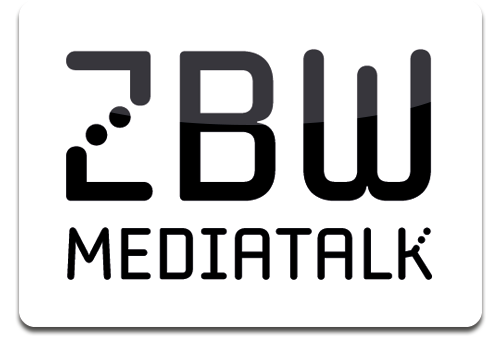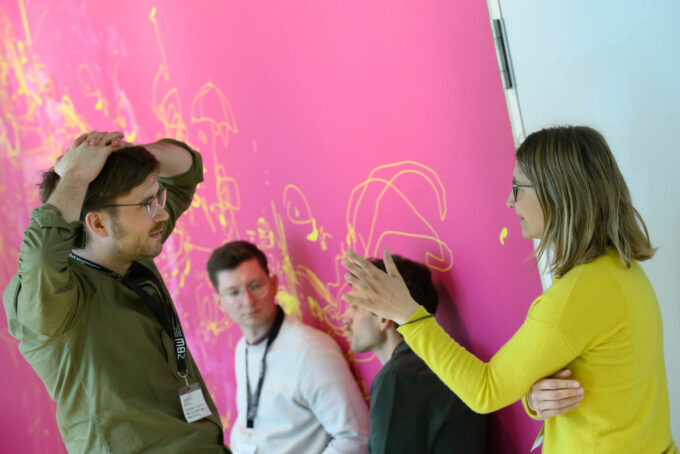
Shadow Libraries: Plan B for the Open Access Transformation?
What about shadow libraries? Though Open Access seems to be widely accepted, we might miss making the goal of an Open Access transformation reality. One session at the Barcamp Open Science asked if shadow libraries might turn out as the plan B for the Open Access transformation.
by Lambert Heller (TIB – Leibniz Information Centre for Science and Technology)
One session offered at this year’s Barcamp Open Science in Potsdam dealt with shadow libraries as an alternative for achieving the goal of Open Access transformation.
Library and Information Science (LIS), especially in Germany, seems to have a conformity bias when it comes to shadow libraries. Statements from main actors in the field (most recently Annas Archiv) hardly find a counterpart in independent research on the topic. (LIBREAS being the notable exception, as you can tell from the references further below.)
Although the challenge at hand could hardly be more pressing, given, for instance,
- German research institutions collectively handing over large parts of their acquisition budget (hence, their bargaining power) to the science publishers’ oligopoly, tellingly calling *this* their “transformation” strategy, the DEAL.
- over and over, blanket permissions to process and redistribute large parts of human knowledge are claimed by big publishers and big tech, nurturing their Large Language Models (LLMs), while libraries, like the Internet Archive, are even denied to allow individual readers to lend ebooks.
Though by now, almost all governments officially agree to the goal of the Open Access transformation, chances are, we are collectively missing this goal. In this session, we checked
- if shadow libraries might turn out as the most likely, de facto, plan B for Open Access transformation and
- if yes, what that does mean in practice – especially, in relation to (official, government funded) library work in a country like Germany./li>
The discussion covered the following topics:
Shadow Libraries seen as successful digital libraries
Shadow libraries have an ever growing number of downloads and readers (Dorothea Strecker, “Nutzung der Schattenbibliothek Sci-Hub in Deutschland” (German). LIBREAS. Library Ideas, 36 (2019)).The corpus is offered to researchers for new research ideas using for instance text mining (Example: Anna’s Archive). This is important from a LIS perspective. “First law” of Library Science (S.R. Ranganathan): “Books are for use” (not for locking away in preservation). This having said: Digital shadow libraries are digital libraries, so they share their shortcomings, like not being a “third place”. The physical and digital aspects of libraries should complement each other; the existence of digital libraries does not render physical libraries useless.
Why? Ease of use
Shadow libraries are used due to their ease of use. Having a DOI, some people go straight to a shadow library instead of using legally provided ways by the library. Ease of use should be a role model for libraries. Tools like Unpaywall are also easy to use and could be promoted more by libraries. Hidden digital archives (for instance preservation of national or “out of print” cultural heritage) are sometimes part of libraries’ mission, while this does not help much in terms of “ease of use”.
Weaknesses of public infrastructures
This is one important explanation in the difference of shadow libraries’ easiness. Institutional repositories have to be “re-learned” every time when a researcher moves to a different institution. That, again, makes Sci-Hub more usable, because it is not tied to a single institution.
Open Access ismore than just reading. Open Access means more than the freedom to consume the content. It should also be reusable. Shadow libraries don’t add anything to that end.
Scholarly-led instead of brand-driven publishing
This is a bigger perspective of the landscape today. At the moment, obviously we “need” publishers for their traditional role in disseminating literature. But publication culture is changing and libraries should change with them, making use of the new, easier ways of publishing. With these new possibilities, access can be enhanced (different formats, digital dissemination and further more) by the libraries, if they take on new roles in the publishing process. Shadow libraries in their current form won’t replace this new mission of libraries and complementary, scholar-led way of open publishing. However, if research assessment stays as it is, researchers will stick to their old ways of publishing with big publishing houses where reputation is measured in Journal Impact Factor (JIF) and the likes. Libraries already offer many opportunities for scholar-led publishing (repositories, Open Journal Systems, university presses) that are not used as much as they could be.
Research on shadow libraries
Research on shadow libraries is required to learn more and normalise the knowledge about this field. We must overcome conformity bias. Research ideas and ongoing efforts are:
- How to distribute huge blobs of literature? An infrastructure challenge which is shared between Anna’s Archive, Sci-Hub or similar places, and more traditional digital preservation / dissemination efforts. We need means to disseminate big text corpora, recently mostly for the training of LLMs.
- Himmelstein et al. (2018) found that research results were available and cited more if they could be found on Sci-Hub or were available in Open Access, compared to on closed platforms. (Himmelstein, D. S., Romero, A. R., Levernier, J. G., Munro, T. A., McLaughlin, S. R., Greshake Tzovaras, B., & Greene, C. S. (2018). Sci-Hub provides access to nearly all scholarly literature. eLife, 7:e32822.)
- DOIs are a reason why Sci-Hub is so successful, because without them it would be very difficult to find specific content in Sci-Hub. Shadow libraries are potentially a meaningful source of DOI-related information, like usage stats, which again could be reused by traditional, legal systems using DOIs.
Should we bring Sci-Hub up in our courses on information literacy?
Obviously, there are gaps to be filled. What are the legal consequences if something goes wrong when using a shadow library? Sci-Hub is located in Belarus, so far keeping it safe from persecution. The passive use of Sci-Hub will probably not be prosecuted. Publishers can file legal complaints and close top-level domains. A lot of papers even refer to Sci-Hub and do not get any problems from that (see Eric W. Steinhauer, “Die Nutzung einer ‘Schattenbibliothek’ im Licht des Urheberrechts” (German). LIBREAS. Library Ideas, 30 (2016).
This text has been translated from German.
This might also interest you:Barcamp Open Science 2024: Happy Birthday! and all other articles on the Barcamps of recent years can be found here here.
As a social scientist and academic librarian, Lambert Heller founded the Open Science Lab (OSL) at TIB – Leibniz Information Centre for Science and Technology in 2013. With NFDI4culture (German), Open Research Information and contract or grant-funded projects, the OSL helps communities in science and culture to adopt open digital tools and practices. He can also be found on LinkedIn and Mastodon.
Portrait: Lambert Heller©
View Comments

Research Data Act: Incremental Step in the Right Direction?
Will the federal Research Data Act (Forschungsdatengesetz, FDG) actually help to...




